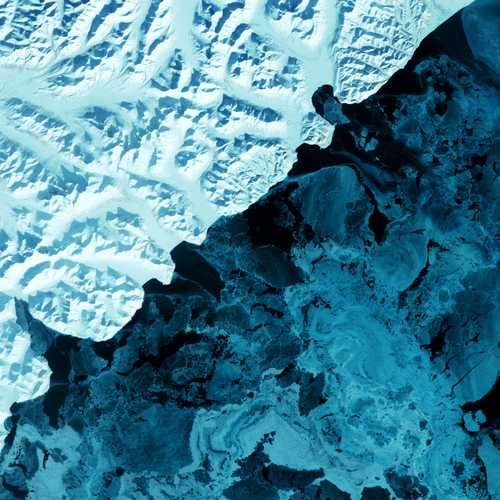
As enshrined in the Universal Declaration of Human Rights adopted by the United Nations General Assembly in 1948, human rights mandate certain “basic rights and fundamental freedoms” as being inherent to all individuals, irrespective of “nationality, place of residence, sex, national or ethnic origin, colour, religion, language, or any other status”.
Those rights include the right to life, the prohibition of slavery and torture, freedom of movement and right to asylum, freedom of thought and expression, and the right to an adequate standard of living.
These rights continue to be flouted across the world, frequently on the basis of just those statuses it sets out to protect.
Nevertheless, the human rights movement, which emerged “in the contexts of anti-colonialism, anti-imperialism, anti-slavery, anti-apartheid, anti-racism, and feminist and indigenous struggles everywhere”, are highly significant in providing a framework for the protection and preservation of every individual’s humanity.
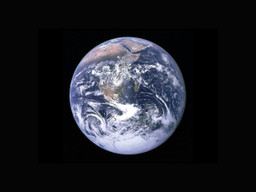
But: what protects living beings which are not human? Or, indeed, entities which are not alive at all? This is where rights of nature, or Earth rights, come in.
Why are rights of nature needed?
That no declaration of the rights of nature has been made is starkly instructive.
According to the WWF, humans have wiped out 60% of mammals, birds, fish, and reptiles since 1970: a decline of more than half in less than 50 years.
Estimates of the number of species which have gone extinct as a result of human actions over the past 500 years (before which records do not exist), as part of the sixth mass extinction, varies wildly. Reuters reports 881 species as a conservative estimate; if species which scientists believe may be extinct are added to the total, it increases to 1,473. This rate of extinction “is unprecedented in the last 10 million years”. In addition, upwards of one million species are already “currently on the brink”.
Each species that is lost takes with it “the functions they perform”. Yet human damage to global ecosystems is so vast that it can be measured in terms of the loss of not just species, but of entire genera (the taxonomic category above species); a report by Stanford University and the National Autonomous University of Mexico describes this as the “rapid mutilation of the tree of life”. The losses of these genera, and of the functions of all the species they contain, could lead to the “catastrophic” collapse of ecosystemic functions.
Such a collapse would attack “the conditions that make human life possible”, threatening “the persistence of civilization and the livability of future environments for H. sapiens”.
The stakes for protecting the natural world could not have higher stakes for ourselves – to say nothing of our moral right to exterminate species which “may have taken thousands or millions – even billions – of years to evolve”.
The necessity for Earth rights is therefore clear.
But what exactly are Earth rights?
In opposition to the conception of nature as a commodity which can be exploited (or which exists expressly to be exploited), granting rights to nature is a legal and jurisprudential model more appropriate to the modern understanding of “the complex interrelations between humans and nature”.
By “prioritis[ing] the intrinsic rights of nature”, Earth rights rebuffs our prevailing, anthropocentric mode of engagement with the world. Seen through this lens, if humans are deserving of their rights being enshrined in law, then so too are entities like trees, oceans, animals, and mountains.
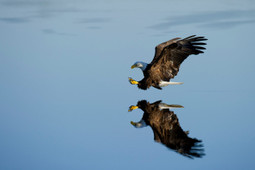
The Commentaries on the Laws of England by jurist, justice, and Tory politician William Blackstone were significant in the development of English law, and, as a consequence, have been influential upon global legal systems and upon “our dominant [contemporary] worldview”. In the Commentaries, Blackstone drew upon “the biblical injunction of human dominion over nature in Genesis”, stating that, “The Earth therefore and all things therein, are the general property of all mankind, exclusive of other beings from the immediate gift of the creator.”
In contrast to this damagingly entrenched entitlement, Earth rights mean that animals, ecosystems, and even locations can be accorded the status of legal personhood. On this basis, these entities gain the right to defend themselves in a court of law via a guardian, who will act on their behalf and in their best interest (in the same way that a charitable trust designates a trustee).
Doing this means that the natural entity in question can “secure the highest level of environmental protection under which an ecosystem can thrive and whose rights are not violated”.
How did Earth rights come about?
Of course, the idea of nature being deserving of respect, rights, and protection is not new; this mentality is characteristic of traditional Indigenous practices. However, the notion of working within the modern legal-political system to “provide guarantees for the protection of life on earth” first came about via US environmental law.
A formative precedent was set in the 1972 United States Supreme Court case Sierra Club v. Morton. The Walt Disney Company wished to build a $35 million ski resort in a valley of California’s Sequoia National Forest; environmental organization the Sierra Club sought to block this development. Though the Sierra Club ultimately lost the case, neither was the land developed; in fact, it was subsequently made part of Sequoia National Park.
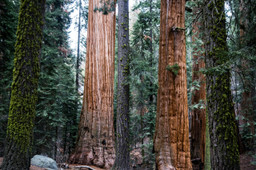
During proceedings, one of the associate justices, William O Douglas, offered a dissenting opinion in which “he argued that nature, rather than the Sierra Club, should be allowed to be the plaintiff”. He suggested that it ought to be possible to litigate “environmental issues […] in the name of the inanimate object about to be despoiled, defaced, or invaded by roads and bulldozers”. He noted the inanimate objects like ships or corporations could be parties within litigation, and went on that the same should be true of “valleys, alpine meadows, rivers, lakes, estuaries, beaches, ridges, groves of trees, swampland, or even air that feels the destructive pressures of modern technology and modern life. […]
“[B]efore these priceless bits of America […] are forever lost or are so transformed as to be reduced to the eventual rubble of our urban environment, the voice of the existing beneficiaries of these environmental wonders should be heard.”
Despite these rousing sentiments, environmental law is not without its limits, still operating from an assumption of human primacy. The United Nations Conference on the Human Environment, which took place in Stockholm in 1972, gave “safeguarding the homo sapiens” as the key role of environmental laws, rather than the protection of the environment for its own sake. Clearly, a bolder system is required. But, thankfully, Earth rights are starting to be put into practise.
Where have Earth rights been put into action?
Ecuador
Made history in 2008 by formally recognizing and implementing the rights of nature under the name of the Rights of Pachamama (Mother Earth). The country’s constitutional provisions assert that “all persons, communities, peoples, and nations can call upon public authorities to enforce the Rights of Nature”.
The USA
Two years later, as part of a ban on shale gas drilling and fracking, the rights of nature were unanimously recognized by the City Council of Pittsburgh, Pennsylvania.
Colombia
In 2018, 25 plaintiffs aged between seven and 26 “sued several bodies within the Colombian government, Colombian municipalities, and a number of corporations” on the basis that their rights to a healthy environment, life, health, food, and water were being threatened not only by climate change but by “the government’s failure to reduce deforestation in the Amazon”.
While a lower court ruled against the plaintiffs, this decision was later reversed by the Supreme Court of Colombia, which recognized that the “fundamental rights of [human] life […] are substantially linked and determined by the environment and the ecosystem”. In addition, it recognized the Colombian Amazon as being “entitled to protection, conservation, maintenance, and restoration”, and ordered that the government “formulate and implement action plans to address deforestation in the Amazon”.
Pakistan
In 2021, the country’s supreme court upheld a decision by the Provincial Government of Punjab blocking further construction or expansion of cement plants in environmentally fragile zones. The court stated that “the environment needs to be protected in its own right”, and called for compromises between humanity and the environment “for the better[ment] of both”.
Brazil
The Fundão dam collapse of 2015 released 10 billion gallons of waste from an upstream iron mine, causing “a wave of [arsenic-laced] sludge [to pour] into the Doce River”. As a result, earlier this year, the city of Linhares legally recognized the waves at the mouth of the river as entities possessing rights, “and acknowledge[d] the ocean as a living being subject to intrinsic rights to existence, regeneration, and restoration”.
Rights granted to these waves include the rights to maintenance of “their physical-chemical conditions for ecological balance”, to the prevention of human interference, and to decision-making which balances both traditional knowledge and conservation with scientific approaches.
Spain
In 2008, the Spanish parliament considered the provision of human-like rights for great apes. Perhaps as a result of some MPS being “revolted at the idea of elevating primates to the same level as humans”, the country has only now belatedly drafted a law which would attempt to stamp out practices harmful to “the life, physical integrity, dignity and survival of great apes”. In doing so, it aims to provoke a broader discussion of the rights of these apes – some of our closest relatives, given that we are ourselves great apes – and, indeed, the rights of other animals, in Spain and elsewhere.
India
When a retired man tried to deed away protected land, the presiding judge invoked the doctrine of parens patriae (“parent of the nation”). Though usually used by the state to intercede in cases of parental abuse or negligence, in this case it allowed “the nation [to] step in and [offer protection] just like it would for a vulnerable person”. The judge not only stated that “she [nature] is grasping [sic] for breath”, but made good on this anthropomorphization by according nature the same constitutional rights that humans have recourse to.
The Ganges and Yamuna rivers, two glaciers, and nothing less than the entire animal kingdom have also been given rights equivalent to those of a person.

Panama
A new law published in 2022 acknowledged nature’s right to “exist, persist and regenerate”, while “all forms of rules, regulations, and policies” are not only obliged to incorporate this ruling, but for decision-makers to prioritize solutions “that are less harmful to nature”.
New Zealand
Drawing on the traditionals of its Indigenous Māori populace, the New Zealand government has accorded legal-personhood rights to rivers and forests. Urewera Forest had its status changed from that of national park to legal personhood, and this status – along with self-ownership – was also later given to the Whanganui river. The law “recognise[d] the spirit of [the] river system and acknowledge[d] that it is owned by no-one”. The country’s parliament also appointed both Māori and governmental guardians for the river, “arguably reconciling two different worldviews”.
What is the future for Earth rights?
Since the natural world and all of its constituent entities have been regarded as existing for our benefit since legal systems first arose thousands of years ago, existing laws primarily enforce the property rights of individuals, corporations, and other legal entities. In this model, nature and all of its non-human elements have no standing.
The adoption of Earth rights, however, “would produce a shift from our current extractive economy towards a regenerative economy, and make political institutions accountable for any damage to the environment”. Recognition of ecocide as a crime equivalent to genocide or crimes against humanity is also key to securing this accountability.
Ecocide – human destruction of the natural environment, either deliberately or through negligence – has only been made a crime in a handful of countries, including Ukraine, Russia, and Vietnam, while draft laws have been submitted in others such as Belgium, Mexico, and Brazil. Consistent, international recognition of ecocide as a crime would “provid[e] an enforceable framework to deter destructive practices”; this is what organizations such as Stop Ecocide and the End Ecocide on Earth initiative are working towards, while ClientEarth “use[s] the law to hold polluting companies and negligent governments accountable”.
However, despite the examples given above, adoption of Earth rights is a long way from achieving widespread acceptance. Where legal personhood has been granted to natural entities, this “has so far been mostly symbolic” – meaning that the part these protections have to play in creating “adequate, long-term protection of ecosystems” is hard to determine.
In the timescale of current legal systems, Earth rights have emerged from a mindset which is still new. Lawsuits initiated within the Earth rights framework are part of a transitional movement, meaning that many teething problems remain to be resolved – for example, questions such as, “How are […] damages measured? Who can be held responsible for these damages? Could the appointed guardian be held responsible if a river floods and causes damages?”
Even the question of who can arbitrate in the case of, say, a river that forms the boundary between two countries (or more) is unclear. Even more fundamentally, what is “the intrinsic purpose of, say, a river, [and] who decides that purpose”?
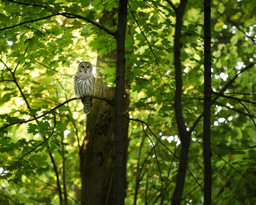
Nevertheless, during our (geologically miniscule) 200,000 years’ existence, “a tiny blip in the 4.5 billion years of our planet’s history[,] […] we have had a greater impact on the Earth than any other species”. And not a positive one. The litany of deforestation, pollution, water-overuse, climate change, and biodiversity loss is overly familiar to the point of prompting indifference. Yet these words have all-too-real consequences – for ourselves as well as for the natural world and our more-than-human cousins. For this reason, it’s imperative that we take any action that we can to safeguard what remains. Starting to comprehend that nature is a complex web of systems deserving of protection, “and to incorporate that idea into our legal, political, economic and social systems”, has never been more urgent.
Earth rights “are not a magic bullet for the looming environmental crisis”, and, like any legislation, they can be stymied by poor enforcement – or even cause unexpected or unintended harm in their own right.
On the other hand: the more Earth rights are implemented, the easier their continued implementation will become. It can also be hoped that this positive feedback loop will also drive crucial broader cultural changes, further mainstreaming the understanding of the natural world’s right to adequate protection.
Earth.fm is a completely free streaming service of 1000+ nature sounds from around the world, offering natural soundscapes and guided meditations for people who wish to listen to nature, relax, and become more connected. Launched in 2022, Earth.fm is a non-profit and a 1% for the Planet Environmental Partner.
Check out our recordings of nature ambience from sound recordists and artists spanning the globe, our thematic playlists of immersive soundscapes and our Wind Is the Original Radio podcast.
You can join the Earth.fm family by signing up for our newsletter of weekly inspiration for your precious ears, or become a member to enjoy the extra Earth.fm features and goodies and support us on our mission.
Subscription fees contribute to growing our library of authentic nature sounds, research into topics like noise pollution and the connection between nature and mental wellbeing, as well as funding grants that support emerging nature sound recordists from underprivileged communities.

